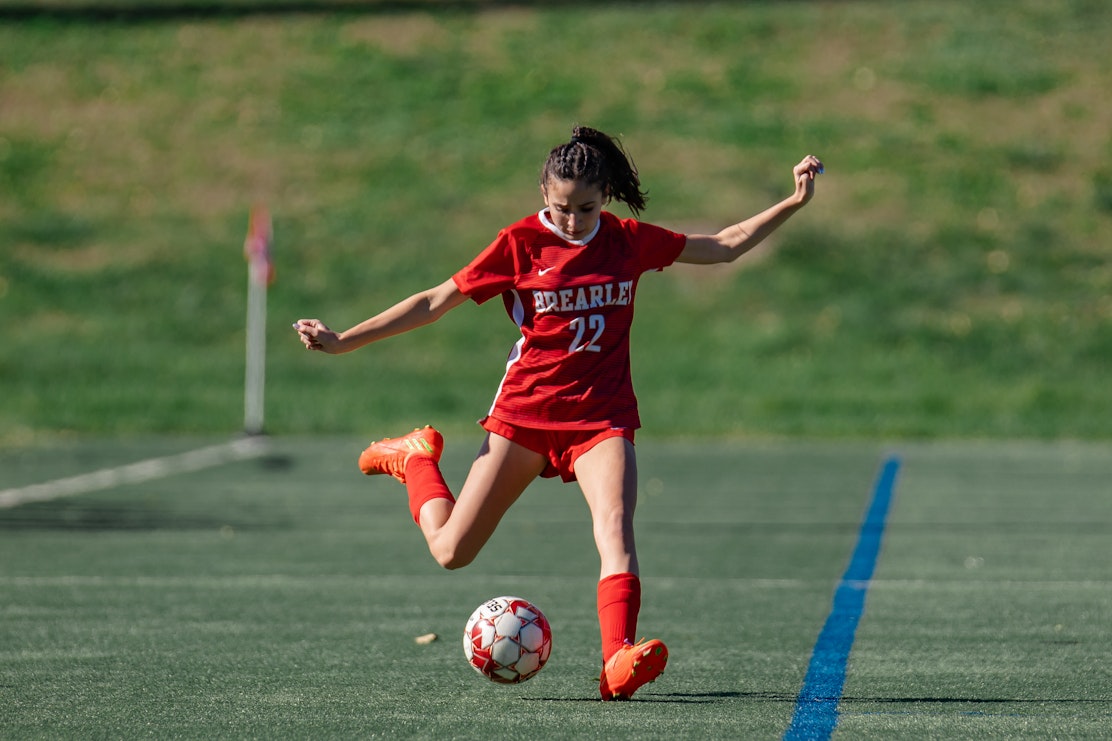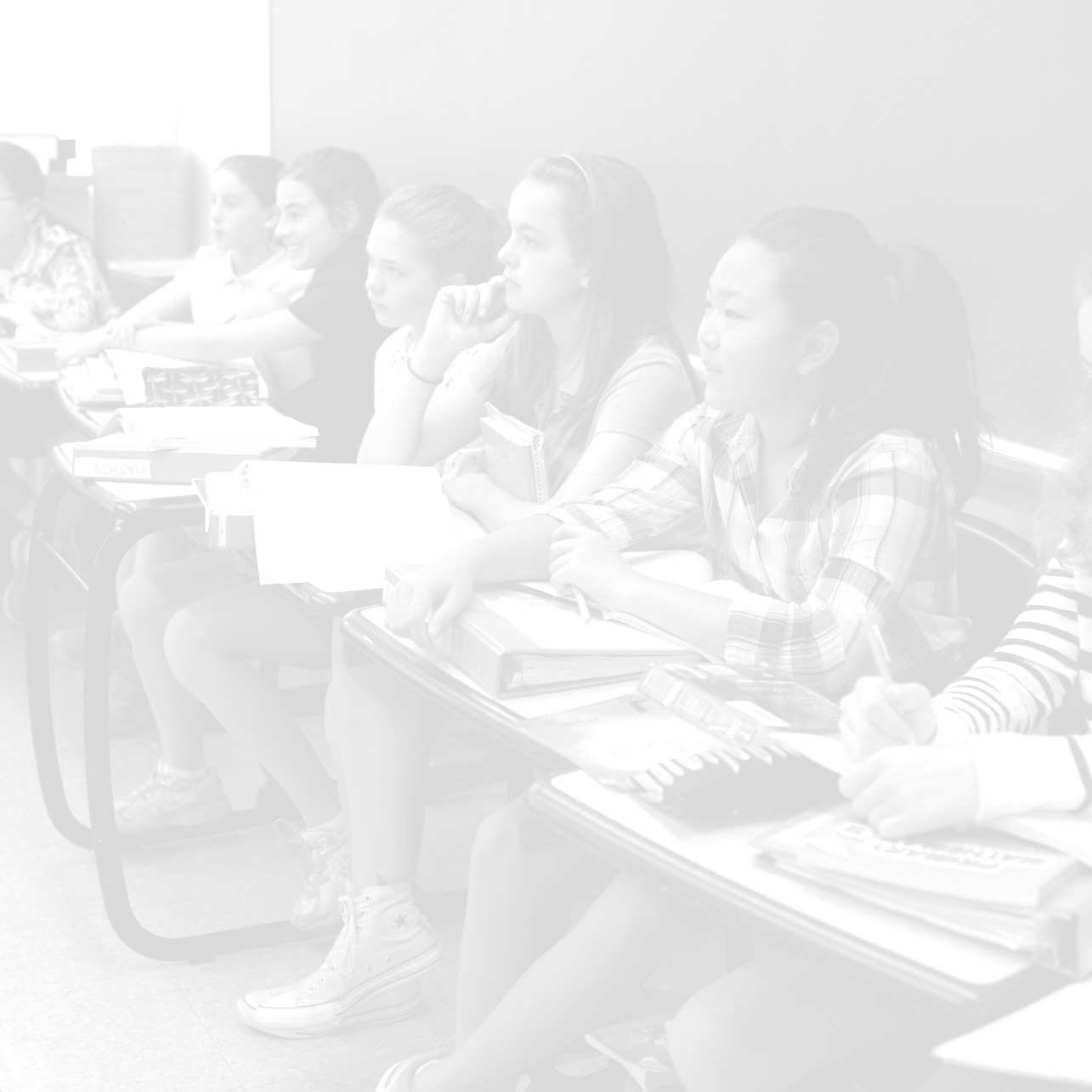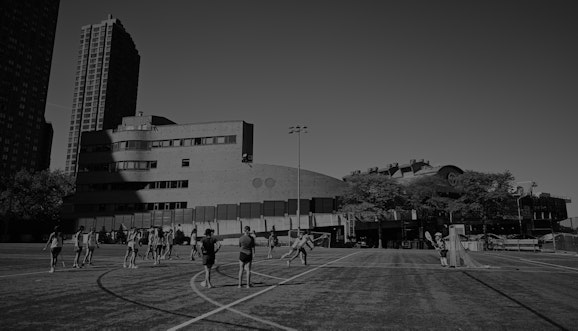Athletic Training and Strength & Conditioning
A Note from Athletics
The Brearley School has on staff a full-time board-certified (BOC) and New York State–licensed athletic trainer. Certified athletic trainers are health care professionals who render service or treatment, under the direction of or in collaboration with a physician. As a part of the Health Office team, services provided by athletic trainers include but are not limited to: primary care, injury and illness prevention, wellness education, emergent care, clinical diagnosis, therapeutic intervention and rehabilitation of injuries and medical conditions. Brearley’s athletic training staff is responsible for evaluating all injuries to our student-athletes and following up with parents/guardians immediately following any incidents.
Brearley’s athletic training staff is committed to providing comprehensive, evidence-based, and patient-centered healthcare for all athletes. It is also the goal of athletic trainers at Brearley to create a safe, inclusive environment for all athletes.
Any student injured during regular school hours should report to either the school nurse or athletic trainer. Although a doctor may clear a student to return to athletic participation, final approval for student-athletes to return to athletics will be provided by the athletic trainer.
Education and awareness among our students, staff and community is our biggest goal. We encourage all parents and guardians to review the head injury information provided below. If you have any further questions, please feel free to contact the athletic trainer or school nurse.
Laura London, MS, ATC, CSCS
Head Athletic Trainer
Head Strength and Conditioning Coach
Concussion Management and Awareness
A concussion is a type of traumatic brain injury (TBI) caused by a bump, blow, or jolt to the head, body or jaw that results in a rapid back-and-forth movement of the head and brain. An athlete does not have to lose consciousness or experience amnesia to be diagnosed with a concussion. Accordingly, these injuries are often underreported. The US Center for Disease Control (CDC) estimates that 1.6 million to 3.8 million people suffer a concussion each year. Symptoms vary from person to person but can include headache, head pressure, fatigue, nausea, memory problems, confusion, dizziness, blurred vision, sensitivity to light and noise, anxiety, irritability and depression. Recovery from one concussion to another will vary. Avoiding reinjury and overexertion until fully recovered is critical to proper concussion management. While school staff will exercise reasonable care to protect students, head injuries may still occur. More information regarding concussions is available for families from the New York State Education Department and New York State Department of Health websites.
The Concussion Management Team (CMT) is a committee of Brearley faculty and administrators who support the student-athlete's return to the classroom and athletics. The CMT includes a Health Office representative, division heads, the director of athletics, and a Counseling and Wellness Office representative. The athletic trainer will notify the CMT of injury prior to the next school day so that appropriate follow-up can be initiated in school immediately upon the athlete’s return to school. The athletic trainer and school nurse will monitor the athlete’s individual symptomatology and neurocognitive status for the purposes of developing or modifying an appropriate health care plan for the student. The athletic trainer is responsible for monitoring recovery and coordinating the appropriate Return to Learn (RTL) and progression with the treating physician.
All students in Classes V-XII will take a baseline ImPACT test every two years. Specifically, all students who participate in Brearley athletics are required to have an updated ImPACT test baseline on file. Failure to complete ImPACT testing prior to activity will result in the Athletics Department prohibiting the student-athlete from participating in the athletics. To learn more about ImPACT, please go to www.impacttest.com.
Per NYSAIS guidelines, physical education teachers, coaches, athletic trainers and nurses receive training to recognize the signs, symptoms and behaviors consistent with a concussion. If an athlete is suspected of having a concussion, she will be removed immediately from active play by a teacher, coach or an athletic trainer. All athletes who exhibit symptoms of a concussion are not permitted to return to athletic activity until they have been symptom-free for not less than 24 hours and obtain a physician’s clearance note to return to activity. All clearance paperwork is saved in the athlete's permanent medical file. Any athlete with a witnessed loss of consciousness (LOC) of any duration should be spine-boarded and transported immediately to the nearest emergency department via emergency vehicle. Any athlete who has symptoms of a concussion and who is not stable (i.e., her condition is changing or deteriorating) must be transported immediately to the nearest emergency department via an emergency vehicle. Any athlete who exhibits any of the following symptoms should be transported immediately to the nearest emergency department via an emergency vehicle: deterioration of neurological function; decreasing level of consciousness; decrease or irregularity in respirations; decrease or irregularity in pulse; unequal, dilated or unreactive pupils; any signs or symptoms of associated injuries, spine or skull fracture and/or bleeding; mental status changes, such as lethargy, difficulty maintaining arousal, confusion; seizure activity; cranial nerve deficits. A symptomatic but stable athlete may be transported by her parent or adult guardian; she may not be transported by anyone else unless approved by the athletic director. The parent or guardian should be advised to contact either the athlete’s primary care physician or one of the CMT-appointed concussion physicians on the day of the injury. The option of emergency transportation will be offered to parents, even if the provider does not feel it is necessary.
If symptomatic, the athlete will be instructed not to do homework during the first night after injury and will be given extensions on any projects/tests/quizzes for the next day. In addition, the nurse or athletic trainer will alert the CMT of the incident and will communicate with the athlete’s teachers and advisor so that they are aware of the athlete’s academic needs. The physician will fill out the RTL for each appropriate phase for academics. This will be specific to the severity of the concussion and the needs of the athlete. Upon finishing the RTL, receiving permission from the division head, and written medical clearance from the treating physician, the athlete will be able to start the Return to Play process.
Since concussions are a form of traumatic brain injury, mental health support is available for all students recovering from a concussion through the Brearley Counseling and Wellness Office. Depression, irritability and anxiety are all considered symptoms of a concussion. Additionally, if a student already experiences mental health issues, pre-existing symptoms may be exacerbated. During daily check-ins with the Health Office, students will be asked about their emotional recovery as well as their physical health.
Returning to participate on the same day of injury is not permitted. As previously discussed, any student who exhibits signs or symptoms of concussion, or has abnormal cognitive testing, should not be permitted to return to play on the day of the injury. Twenty-four hours or more after the concussion, the student must meet all of the following criteria in order to progress to activity: asymptomatic at rest and with exertion (including mental exertion in school); caught up with all school work; within normal range of baseline on post-concussion ImPACT testing or deemed recovered by physician; have written clearance documentation from a primary care physician or specialist. Once all of the above criteria are met, the student will progress back to full activity following a stepwise process (as recommended by both the Zurich Guidelines and the NATA Statements), under the supervision of the athletic trainer or non-Brearley health-care provider. Progression is individualized and will be determined on a case-by-case basis. Factors that may affect the rate of progression include the previous history of concussion, duration and type of symptoms, age of the student, and sport/activity in which the student participates. For example, a student with a prior history of concussion, one who has had an extended duration of symptoms, or one who is participating in a collision or contact sport should progress more slowly. A treating physician’s office can also provide a progressive Return to Play protocol.
Rest until asymptomatic—both mentally and physically
Light aerobic exercise, e.g., walking, stationary bike
Sport-specific exercise, e.g., running, dribbling
Non-contact training/skill drills, e.g., strength training, sprints
Full-contact training in practice setting
Return to competition, e.g., game play
Each stage is at least 24 hours. If the student experiences post-concussion symptoms during any phase, the student should drop back to the previous asymptomatic level and resume the progression after 24 hours. The athlete should see the athletic trainer daily for reassessment and instructions until progressing to unrestricted activity. The athletic trainer or physician will also determine the timeline for when the athlete can return to nonphysical team activities, such as watching games or practices.








